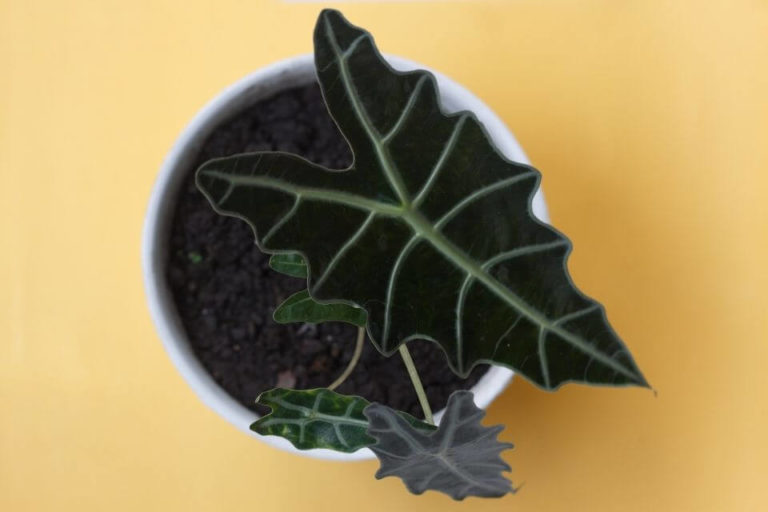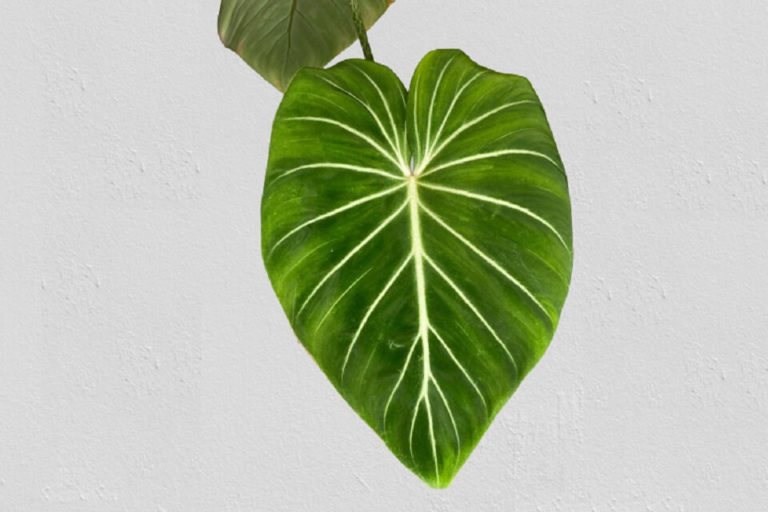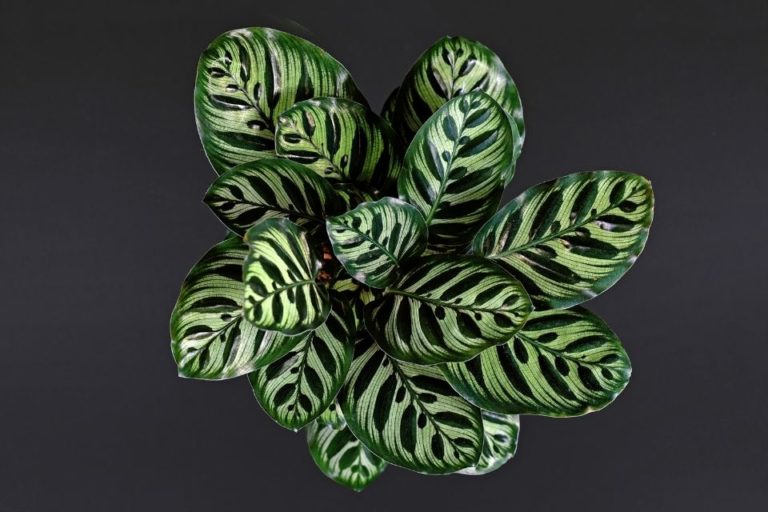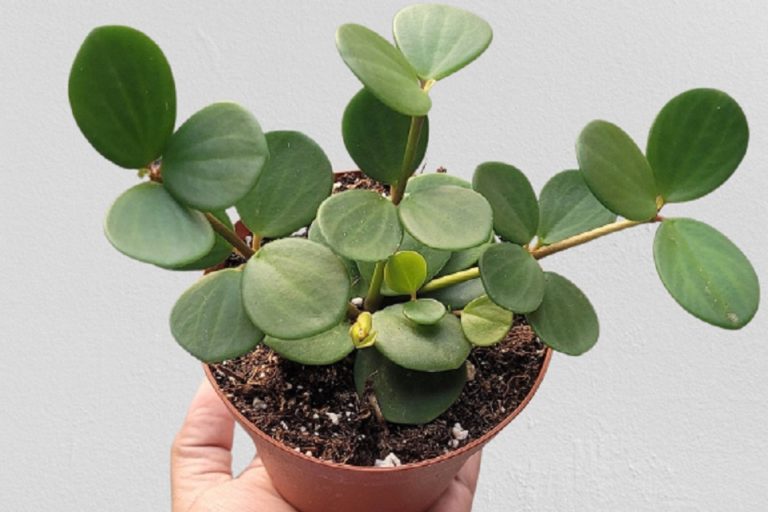Alocasia Black Velvet Care: How To Propagate, Grow And Care

Alocasia Black Velvet is a beautiful, dark green plant that can be grown either indoors or outdoors. It’s easy to care for and propagate, making it a great choice for gardeners of all levels of experience.
In this guide, we will discuss the best ways to grow and care for Alocasia Black Velvet plants. We’ll also provide tips on how to propagate them so you can share this wonderful plant with your friends and family!
TABLE OF CONTENTS
Alocasia Black Velvet Overview
This incredible evergreen perennial belonging to the Araceae family can grow up to three feet tall and produces large, heart-shaped leaves that are velvety to the touch.
The plant gets its common name from its beautiful black stems, which contrast sharply with the glossy green of the leaves. It is native to tropical regions of Asia and is commonly grown as a houseplant in temperate climates.
When it comes to Alocasia Black Velvet care, the most important thing to remember is that this plant prefers warm, humid conditions. It will do best in partial shade or filtered sunlight, as too much direct sun can scorch the leaves.
The soil should be rich and well-draining, and the plant should be allowed to dry out somewhat between watering. Alocasia Black Velvet is a relatively low-maintenance plant, but there are a few things to watch out for.
Overwatering can cause the leaves to yellow and drop off, so be sure to water only when the soil is dry to the touch. In addition, this plant is toxic to pets and humans if ingested, so be sure to keep it out of reach of children and animals.
Appearance, Size, And Growth Rate
The Alocasia Black Velvet has large, heart-shaped leaves that are black-green with a velvet sheen. They have a stiff texture. The size of the leaves can reach up to 18” long and 12” wide.
The plant produces new leaves from the center of the rosette, pushing older leaves outwards. The Black Velvet grows quickly and can reach heights of up to six feet tall.
Alocasia Black Velvet Uses And Placement
The Black Velvet is often used as a houseplant or in tropical gardens. They make great centerpieces and can be placed on shelves or in hanging baskets.
Additionally, they can be used in shady areas under trees or as a groundcover. They also fit best when placed in areas with high humidity.
Alocasia Black Velvet Care
The Black Velvet is a relatively easy plant to care for. They prefer well-draining, moist soil and should be watered regularly. Allow the top inch of the soil to dry out in between watering.
They also like bright, indirect light but can tolerate low light conditions. The biggest threat to this plant is overwatering, which can lead to root rot.
– Pot Size And Soil Requirement
The Alocasia Black Velvet should be potted in a well-draining potting mix. The size of the pot will depend on the size of the plant. They should be repotted every one to two years or when they have outgrown their current pot.
The pot should have drainage holes to allow excess water to escape. The Black Velvet likes slightly acidic soil with a pH ranging between 5.5 to 6.5 with some organic matter.
Below are the suitable Black Velvet soil recipes:
– Two parts peat moss, one part perlite or sand
– One part peat moss, one part coco coir, and one part perlite or sand
– One part Sphagnum peat moss, one part loam, and one part perlite or sand.
– Alocasia Black Velvet Watering Schedule
The Alocasia Black Velvet should be watered regularly. Allow the top inch of the soil to dry out in between watering. They also like bright, indirect light but can tolerate low light conditions.
The biggest threat to this plant is overwatering, which can lead to root rot. Generally, ensure you are watering the plant lightly but regularly to avoid any water-related issues.
– Alocasia Black Velvet Light Requirements And Exposure
Being native to the tropical regions of Southeast Asia, the Black Velvet is used to being in shaded areas. In its natural habitat, it grows under canopies of taller trees.
When kept as a houseplant, it is best to place the Alocasia Black Velvet in an area with bright, indirect light. They can tolerate low light conditions but will not thrive.
The leaves may also begin to yellow and the plant will become leggy if it does not receive enough light.
– Best Temperature Ranges For A Healthy Plant
The Alocasia Black Velvet prefers warm temperatures and high humidity. They are not frost-tolerant and should be kept above 60 degrees Fahrenheit.
They also do not like sudden temperature changes and should be kept in a stable environment. The ideal temperature range for the Black Velvet is between 70 and 90 degrees Fahrenheit.
If you are summering your Alocasia Velvet outdoors, make sure to bring it back inside before the temperature drops in the evening.
– Alocasia Black Velvet Humidity Needs
This plant prefers high humidity and will do best in an environment with 50-70% relative humidity. If the air is too dry, the leaves may begin to brown and curl at the edges.
To increase the humidity around your Alocasia Black Velvet, you can use a humidifier or pebble tray. You can also mist the leaves with water to increase the humidity around the plant.
– Fertilizing Alocasia Black Velvet
The Alocasia Black Velvet should be fertilized every two weeks during the growing season. They can be fertilized with a standard houseplant fertilizer or a balanced liquid fertilizer.
Be sure to dilute the fertilizer to half strength before applying it to the plant Too much fertilizer can burn the roots and leaves of the plant.
You should stop the application of fertilizer six weeks before the start of winter to allow the plant to rest. It is recommended to fertilize your plant after thorough watering to avoid any fertilizer-related issues.
Pruning Alocasia Black Velvet
You can prune the Alocasia Black Velvet to remove any yellow or brown leaves. You can also prune the plant to shape it and encourage new growth. When pruning, be sure to use clean, sharp pruning shears.
You should also sterilize the blades with rubbing alcohol to avoid spreading diseases. Also, keep in mind that the Black Velvet contains a sap that can be an irritant to the skin. It is best to wear gloves when handling this plant.
Step by step Alocasia Black Velvet Propagation
Alocasia Black Velvets can be propagated by seeds, division of rhizomes, or stem cuttings.
Form Seed:
The first step is to sow the seeds in a moistened, well-drained soil mix. It is important to use a sterile seed-starting mix to avoid any diseases. You should sow the seeds thinly so that they have room to grow.
Once the seeds are sown, you should cover the pot with plastic wrap or a glass lid. This will create a humid environment that is ideal for germination.
Place the pot in a warm area with indirect light and wait for the seeds to germinate. Once the seedlings have emerged, you can remove the lid and plastic wrap.
Division Of Rhizomes
The best time to divide the rhizomes is in the spring. You should dig up the entire plant and carefully separate the rhizomes. Each section should have at least one bud or leaf.
You can then replant the divisions in a moistened, well-drained soil mix. Be sure to water the plants well and place them in a warm area with indirect light.
Stem Cuttings
Alocasia Black Velvet can also be propagated from stem cuttings. To do this, you will need to take a cutting that is at least six inches long. The cutting should have at least two leaves.
You can then plant the cutting in moistened, well-drained soil mix. Be sure to water the plant well and place it in a warm area with indirect light. You should also mist the leaves with water to increase the humidity around the plant.
Alocasia Black Velvet Repotting
The Alocasia Black Velvet should be repotted every two years. The best time to repot the plant is in the spring. You will need to use a pot that is one size larger than the current pot.
Be sure to use a well-draining potting mix. You can also add some perlite or vermiculite to the mix to improve drainage. To re-pot the plant, you will need to carefully remove it from the current pot.
You can then gently loosen the roots and replant the plant in the new pot.
Be sure to water the plant well and place it in a warm area with indirect light. You should also mist the leaves with water to increase the humidity around the plant.
Alocasia Black Velvet Common Problems And Prevention
Alocasia Black Velvet is a very popular houseplant, and for good reason! They are easy to care for and make a beautiful addition to any home.
However, like all plants, they can experience some problems from time to time. Below are some of the most common problems and how to prevent them:
– Spider Mites:
Spider mites are tiny pests that attack the leaves of plants, causing them to turn yellow and eventually die. They are most commonly found in dry, warm conditions.
To prevent spider mites, make sure to keep your Alocasia Black Velvet in a well-ventilated area and mist the leaves regularly.
– Alocasia Black Velvet Yellow Leaves:
The most common cause of yellow leaves on an Alocasia Black Velvet is too much direct sunlight. If the leaves are starting to turn yellow, move the plant to a spot with indirect sunlight and make sure to keep the leaves clean.
– Alocasia Black Velvet Leaves Curling:
Curling leaves can be caused by several things, including too much or too little water, pests, or disease. If you notice the leaves on your Alocasia Black Velvet curling, check the plant for pests and remove them if present.
If there are no pests, water the plant evenly and make sure the soil is draining well.
– Alocasia Black Velvet Brown Spots:
Brown spots on leaves are usually caused by too much direct sunlight or water. If the spots are small and brown, they can be removed with a sharp knife.
If the spots are large and dark, the leaves will need to be cut off and the plant should be moved to a spot with indirect sunlight.
– Alocasia Black Velvet Dropping Leaves:
Dropping leaves can be caused by several things, including stress, pests, or disease. If you notice the leaves on your Alocasia Black Velvet drooping, check the plant for pests and remove them if present.
If there are no pests, water the plant evenly and make sure the soil is draining well.
– Alocasia Black Velvet Wilting:
This is another common problem that can be caused by several things, including stress, pests, or disease. If you notice the leaves wilting, check the plant for pests and remove them if present.
If there are no pests, water the plant evenly and make sure the soil is draining well.
– Alocasia Black Velvet is Not Flowering
The most common reason for an Alocasia Black Velvet not to flower is that it is not getting enough light. If your plant is not in a spot with indirect sunlight, move it to a brighter location.
If the plant is getting enough light but still not flowering, it may need a little more time to mature. Give it a few more months and see if it blooms.
– Leaf Spot
Leaf spot is a fungal disease that affects the leaves of plants, causing them to turn brown and eventually die. It is most commonly found in wet, humid conditions.
To prevent leaf spots, make sure to keep your plant in a well-ventilated area and water the leaves at the base of the plant, not from above.
– Root Rot
Root rot is a fungal disease that affects the roots of plants, causing them to turn brown and eventually die. It is most commonly found in wet, humid conditions.
To prevent root rot, make sure to plant your Alocasia Black Velvet in a well-drained area and water the roots at the base of the plant, not from above.
If you notice any of these problems with your plant, don’t despair! With a little care and attention, you can get your plant back on track.
FAQs
Are Alocasia Black Velvet Hard To Care For?
No, they are not! With a little bit of care, you can grow a healthy plant. This plant is perfect for beginner gardeners.
Considering its natural habitat which is tropical rainforests, it can tolerate a range of conditions from humid to dry. Additionally, it is an easy plant to propagate.
Alocasia Black Velvet is also resistant to pests and diseases. If kept under the right conditions, it will thrive and produce beautiful foliage.
How Often Should You Water Alocasia Black Velvet?
As with most plants, the watering needs will vary depending on the time of year and the climate in which it is grown. In general, this plant prefers to have moist soil.
During the growing season, water your plant when the top inch of soil feels dry to the touch. In the winter, reduce watering to once a month.
Does Alocasia Black Velvet Flower?
Yes, this plant does flower. However, it is not a plant that flowers frequently. If you are growing this plant for its flowers, be patient! It may take a few years for your plant to bloom.
The most common reason for an Alocasia Black Velvet not to flower is that it is not getting enough light. If your plant is not in a spot with indirect sunlight, move it to a brighter location.
If the plant is getting enough light but still not flowering, it may need a little more time to mature. Give it a few more months and see if it blooms.
Is Alocasia Black Velvet Rare?
No, This is not a rare plant. It is a popular houseplant that is relatively easy to find. However, it is not as common as some of the other Alocasia species.
If you are having trouble finding this plant, check your local nursery or garden center. You can also order it online from a variety of sources.
Is Alocasia Black Velvet An Indoor Plant?
Yes, it is typically grown as an indoor plant. This plant prefers warm, humid conditions and does not tolerate cold temperatures. If you live in an area with a cold climate, it is best to grow this plant indoors.
Additionally, this plant does not do well in direct sunlight. It prefers bright, indirect light. If you are growing this plant outdoors, make sure to place it in a spot that receives partial shade.
Why My Alocasia Black Velvet Drooping?
There are a few reasons why your plant may be drooping. The most common reason is that the plant is not getting enough water.
Make sure to water your plant when the top inch of soil feels dry to the touch. Additionally, this plant prefers high humidity. If the air in your home is too dry, this could also cause the leaves to droop.
Try misting the leaves with water or placing a humidifier near the plant.
If you notice that the leaves are still drooping, check the roots to see if they are too wet or too dry. Finally, make sure that your plant is getting enough light. This plant needs bright, indirect light to thrive.
If the plant is not getting enough light, it will start to droop. Move it to a brighter location and see if this helps.
Is Alocasia Black Velvet Toxic To Pets Or Humans?
Yes, Alocasia Black Velvet is toxic to both pets and humans. If ingested, it can cause burning and swelling of the lips, tongue, and throat. It can also cause vomiting, diarrhea, and abdominal pain.
In severe cases, it can lead to difficulty breathing and even death. If you suspect your pet has ingested this plant, please contact your veterinarian immediately.
If you or your kid ingest this plant, please contact your doctor immediately. It is not only toxic to pets and humans, but it is also poisonous to other animals.
If you have this plant in your garden, make sure that your fence is high enough to keep out curious deer, rabbits, and other wildlife.
Can I Alocasia Black Velvet Grow Under Grow Lights?
Yes, you can grow Alocasia Black Velvet under grow lights. The best type of light to use is fluorescent lighting. This will provide the plant with the necessary light it needs to grow without putting off too much heat.
Additionally, you will need to provide the plant with 10 to 12 hours of light per day. If you are growing it under artificial lighting, it is important to give the plant a rest period.
This means that you should turn off the lights for 12 hours every day. This will help the plant to stay healthy and avoid any type of stress.
Where Can I Buy A Alocasia Black Velvet Plant?
It is available for purchase online and at many garden centers. If you are having trouble finding this plant, you can ask your local nursery if they can special order it for you.
Final Thoughts
Overall, the Alocasia Black Velvet is a pretty easy plant to care for. As long as you provide it with the proper conditions, it will thrive.
If you’re looking for a unique addition to your indoor jungle, this is the plant for you! With this guide, you should have no trouble keeping your plant happy and healthy for years to come.






